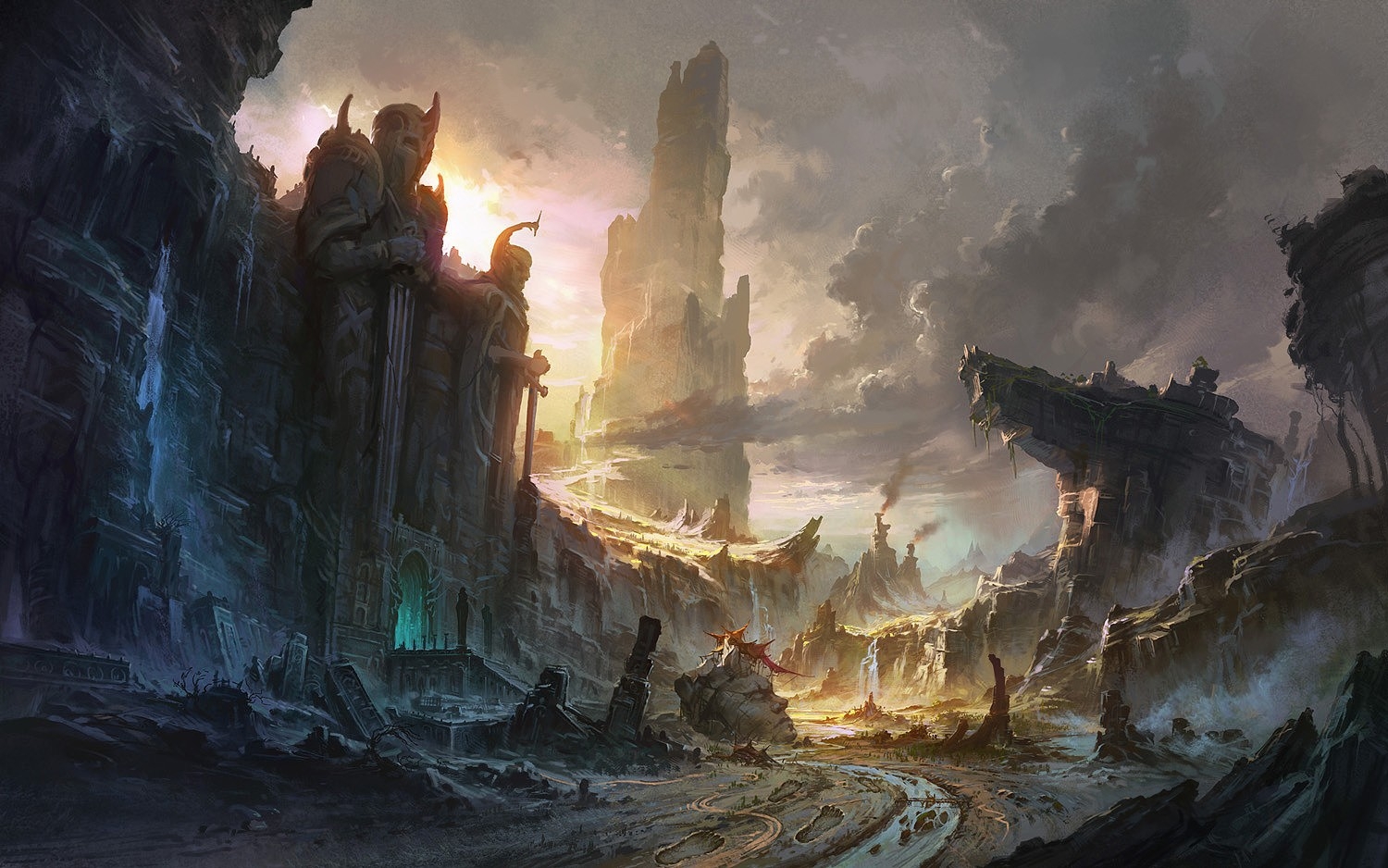Isone Hounds
In those ancient days, when the Dragons nd Giants quarreled and the lands shook and the seas quaked, the Giants bred fearsome beasts with which to wage their war. The Isone Hounds are monsters of a bygone age, most of which have died out or evolved into shadows of their former selves, but yet they remain as a grim reminder of those early days of the world when words and actions were one in the same.
Basic Information
Anatomy
Isone Hounds are large canine creatures that stand at their shortest two stories tall. Their skeletal structure resembles that of the average canine, more similar to that of wolves with a narrow snout and more limber frame. They however, differ greatly from wolves and other canines by their skulls which carry three large curved horns. Two horns flank the jaws of the beast, while the third protrudes from the center of the forehead.
These beasts also possess more elongated digits than their canine counterparts. Thier paws possessing an extra joint and a opposable thumb like digit, hanging just high enough to baerly scrape the ground as they stand. The last feature that sets them apart from other canines is the positioning of their eyes, which are closer to that of a horses, granting them a more expansive visual range.
Being native to the rugged, and often times frigid northern territories, the Isone Hounds have a thick shaggy coat of fur that ranges from stark white to pale grey. The hair of the coat is to thick and heavy that on the average person, a full length coat of the beast's fur is said to be as heavy as plate mail.
Growth Rate & Stages
Isone Hounds are very large creatures, even from birth. When they are born, they could be mistaken for fully grown Dire Wolves, were it not for the small horns on their heads. Their horns are not great protrusions at birth, being more like pale, slightly pointed mounds on their faces, but as they mature, the horns will grow and do not actually stop growing until the beast is slain, requiring the Hounds to constantly groom themselves in order to keep the horns manageable.
The Hounds can grow up to four stories tall, according to some records, others saying as much as ten stories from the old days of the war, but very little evidence survives to support these particular claims. They are very large creatures that were bred for war and hunting by their Giant masters. Reaching over ten feet tall within their first three years of life. A Isone Hound is considered fully grown when their horns reach to the end of their snouts, approximately ten feet long on average.
Ecology and Habitats
Isone Hounds prefer to live in cooler temperate climates, surrounded by dense woods or in the high peaks of mountains. Native to the untamed country, they thrive in the wild, making homes in caves or on cliffsides, where they can remain hidden, but in a strategic location to observe and sense the mood of the territory they stalk outside.
Hound dens are often as large as they are, utilizing smashed branches as bedding as well as splintered logs for structural support and defense. Though the Hounds do not show signs of higher intelligence, they do seem to institutionally be able to understand the basic principles of home security. They will sometimes dig pits and fill them with sharp sticks or bones of eaten prey, or cover the entrances of their homes with downed logs to conceal them.
Additional Information
Perception and Sensory Capabilities
Isone hounds are master hunters, despite their immense size. Thanks to their sharp sense of smell, they can track their prey up to ten miles away, just on scent alone. Thanks to the positioning of their eyes, the hounds also have a nearly perfect field of vision around them, excluding about a fifteen degree range in the back of their head. They also have a strong auditory sense, able to use their ears like large sound trapping cones, due to their shape.
The most fascinating feature of the Isone Hounds is their tusk like horns on their head. These horns actually posses strange sensory nodes which allows them to use the tusks to help move their way through the underbrush, or feel around in the dark places like caves or tunnels when in complete darkness. Similar to the antennae of an insect, these predators could be robbed of all other senses and still be able to use their horns to find their way around.
EXTINCT
Origin/Ancestry
Giant Hounds
Lifespan
80 years
Average Height
40 to 60 feet tall
Average Weight
3,200 to 5,600 lbs.


